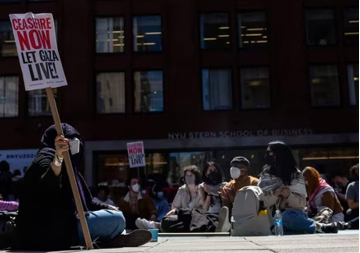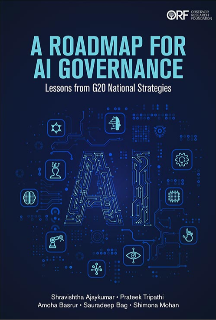
This article is part of the series — India and the World in 2021.
< style="width: 0px;overflow: hidden;line-height: 0">
It will take some time for us to fully understand the year that has just passed — one that has shaken every part of the world in unimaginable ways. The impact of the COVID-19 pandemic, whose ground-zero was Wuhan province in China, has reverberated across multiple sectors the world over. But the year also demonstrated human ingenuity, as seen for instance in the multiple efforts at developing vaccines for COVID-19 in record time.
At the intersection of the pandemic and international politics, what is unlikely to be forgotten soon is China’s role: its initial focus on a blame game rather than identifying the origins and causes of the virus and its spread, and engaging in pandemic diplomacy (which boomeranged to some extent with its faulty testing and PPE kits). Equally, the manner in which China hijacked multilateral agencies such as the World Health Organization (WHO) highlights the urgency in instituting reforms to ensure that they remain effective and are not usurped by any single power. China’s use of economic and trade coercion against countries such as Australia — which sought an independent investigation into the origins of the SARS-CoV-2 virus that causes COVID-19 — illustrates this more clearly. China similarly sought to control the agenda of another multilateral organisation — the International Civil Aviation Organisation (ICAO), which also had an impact on the spread of the virus. As the global community has plenty of stakes in these multilateral organisations, India and like-minded partners including the US, Japan, Australia, France, Canada and the UK have a responsibility to promote their neutrality, transparency and accountability.
But the year also demonstrated human ingenuity, as seen for instance in the multiple efforts at developing vaccines for COVID-19 in record time.
The impact of the pandemic is being felt across social, economic and security sectors. The bigger economies have already shrunk in significant ways, diminishing their ability to spend on critical sectors such as health, education and defence. The economic fallout of the pandemic could last for several years, depending on how badly a country has been hit. India, for one, had been facing economic challenges prior to the pandemic, driven by demonetisation and the improper conceptualisation and implementation of the Goods and Services Tax (GST). COVID-19 has magnified those challenges and made India more vulnerable socially, economically and militarily. While major economies have suffered significant GDP reduction in the first half of 2020, India is one of the worst hit. According to the World Bank report, South Asia Economic Focus, India’s GDP could contract by 9.6 percent in the fiscal year 2020-21. This outlook is worse than what was expected earlier in June, at a much lower 3.2 percent.
Even before the full economic impact of the pandemic had emerged, Indian government officials were already contemplating significant cuts in the defence budget. In May 2020, a senior Ministry of Defence official was reported to have said that defence spending, except for salaries and pensions, could be reduced by “at least 20 per cent from the allocations for the financial year 2020-21 and possibly by as much as 40 per cent.” Slashing the budget by 20 percent was supposed to earn the exchequer around INR 40,000 crore. This comes at a time when the Indian military has been seeking a larger share of the budget given the massive modernisation needs across the Army, Air Force and Navy. Despite the government often harping on the need to strengthen national security, defence spending over the last few years have been at the lowest since the 1962 India-China border war. In 2018, India’s Vice Chief of Army Staff, Lt. Gen. Sarath Chand, made an unusually strong case in the Parliamentary Standing Committee on Defense on the difficulties that the Indian Army as well as the other services continue to face on account of falling defence budget allocations. He pointed to both internal security issues and the external environment, making specific mention of China which he characterised as “increasingly assertive.” Two years since, the picture is no different; if anything, the pandemic has only made it worse.
Even before the full economic impact of the pandemic had emerged, Indian government officials were already contemplating significant cuts in the defence budget.
Apart from the pandemic challenge, the world is facing a China that is becoming increasingly belligerent militarily and diplomatically against its immediate neighbours and beyond. The Chinese People’s Liberation Army (PLA) has engaged in aggressive behaviour towards smaller neighbours around the South China Sea, against Japan and Taiwan on its east, and India on its west. The stand-off in Ladakh has been continuing for more than seven months now. While there have been a number of diplomatic and military consultations between the two sides, there appears to be no solution in sight, at least in the immediate timeframe.
The Galwan clash has also re-oriented India’s approach in many ways. As Ashley Tellis has commented, India-China bilateral relations “can never go back to the old normal. They will reset with greater competitiveness and in ways that neither country had actually intended at the beginning of the crisis.” Galwan also brought home the point that India cannot afford to stay ambivalent and uncommitted in its foreign policy and strategic engagements; its hedging strategy may no longer be viable. Looking at the public discourse in India, especially the narrative from elite public opinion, it seems that the Galwan clash has emerged as a game-changer at least as far as India’s China policy is concerned. In the post-Galwan phase, India appears willing to go further in its strategic associations with like-minded partners such as in the Quad and other trilateral and minilateral forums. The changed bilateral dynamics can also manifest in new Indian Ocean politics. China has been making efforts to maintain a sustained presence in the Indian Ocean, while India is keen to involve its strategic partners such as the US, France, Japan and Australia as well as the Indian Ocean littoral states.
Looking at the public discourse in India, especially the narrative from elite public opinion, it seems that the Galwan clash has emerged as a game-changer at least as far as India’s China policy is concerned.
On the global scale, 2020 has also seen an intensification of US-China competition in many areas, including technology. With such intense competition, there is renewed emphasis on global export controls aimed at controlling the free movement of sensitive technologies and commodities. These will bring into prominence, and accelerate the pace, of decoupling across digital and knowledge networks, in addition to supply chains. The pandemic has also highlighted the vulnerabilities in the global supply chain resulting from an overreliance on a single manufacturing source — i.e., China. This has paved the way for efforts at diversification. One such initiative is the Australia-Japan-India supply chain resilience initiative, the details of which are still being developed. The three countries are aiming to launch the forum in 2021 and are planning to expand it to other countries in Southeast Asia.
The US-China technology competition is merely one facet of the highly competitive nature of great-power relations. It is also likely to affect progress in global governance in many areas, including outer space and nuclear security.
To be sure, there are efforts to overcome these difficulties. The UK government, for instance, has initiated a new proposal on space security — “Reducing Space Threats through Norms, Rules and Principles of Responsible Behaviours” — using a bottom-up approach. Upon receiving inputs from Member States on this proposal, the UN Secretary General is to submit them to the UN General Assembly at the 76th session in September 2021 for further discussion. The new proposal is notable for two primary reasons: it focuses on a behaviour-based approach since efforts to define “space weapons” have yet to produce any concrete outcome; and it does not prescribe a particular course of action, thus providing reasonable flexibility in working out an outcome after discussions with all Member States. Nevertheless, building the necessary support behind the proposal is not going to be easy.
The US-China technology competition is also likely to affect progress in global governance in many areas, including outer space and nuclear security.
On the nuclear security front, the first Review Conference of the amended Convention on the Physical Protection of Nuclear Material (CPPNM) will likely happen in the summer of 2021. The International Atomic Energy Agency (IAEA) as a treaty depositary is required to convene and review the amended CPPNM five years after it entered into force. The 2021 conference will be the first opportunity for state parties to review the execution of the treaty — in terms of how states are implementing their commitments on the ground — identify weaknesses and gaps in the treaty, as well as study the progress being made and examine new and emerging security threats and vulnerabilities in the nuclear security sector. While nuclear security is one sector that has seen relatively better progress — to the extent that there is a legally binding mechanism for the physical protection of nuclear materials and facilities — the growing competition between major powers can cast a shadow on the deliberations at the upcoming Review Conference.
In terms of threats and challenges in the security and technology domains, states should be alert for possible cyber-attacks in both space and nuclear, and broader security sectors. With the growing reliance on online platforms even in sensitive areas such as in nuclear and space establishments, one could expect these attacks to not only grow in number, but possess greater sophistication, too. The economic fallout of the pandemic could also push such establishments to undertake cuts in their personnel, which could lead to dissatisfaction among employees and in turn manifest as insider threats.
Much like 2020, the new year is going to be characterised by myriad security challenges on many fronts. As the world enters the second year of the pandemic, much of the focus in most countries will go into rebuilding their economies, and rightly so. After all, a sound economy is essential to strengthening a country’s national security credentials, and India, for one, is aware of the imperative.
The views expressed above belong to the author(s). ORF research and analyses now available on Telegram! Click here to access our curated content — blogs, longforms and interviews.




 PREV
PREV


